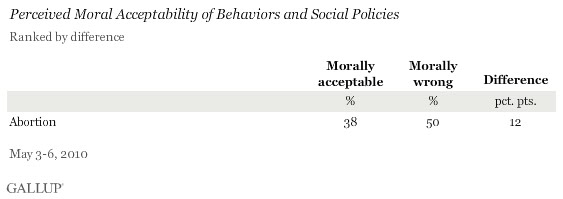Thursday, April 11, 2013
Ironic Quote
-Chris Matthews, 2011-09-07
Sunday, February 24, 2013
A Troubling Pattern in Rape Discussions
Tuesday, September 28, 2010
Howdy thar.

Saturday, September 18, 2010
So tell me, which babies should I kill?
(Cut to Izzie alone with Dorie in her hospital room. Izzie is looking at the heart readings for the quintuplets)
DORIE: How’s it look?
IZZIE: Not bad.
DORIE: Not bad?
IZZIE: Not bad is pretty good when you have 5 babies in your uterus.
(Dorie makes a slight sigh of pain. Izzie looks at her)
DORIE: Ah. It’s Kate. She kicks me so hard. It’s like a belly burn every time.
IZZIE (raises her eyebrows but looking at Dorie’s patient file): You’ve named them already?
DORIE: I know you think I’m crazy. Or maybe just a little bit stupid?
IZZIE: Mrs. Russell, I’m sorry if I’ve done something to offend you.
DORIE: The only thing that will offend me is if you pretend that you haven’t been judging me since the minute we met. (Izzie is silent) We’re gonna be spending a lot of time together so we may as well be honest, right?
IZZIE: If you had reduced the fetuses, even by two, the other three could’ve been carried longer, been more developed and born healthier.
DORIE: And you’re about the 16th doctor that’s told me that.
(Izzie is quite. Dorie reaches out and grabs Izzie’s arm. She places Izzie’s hand on her stomach)
DORIE: This one up here. This is Charlotte. She’s the stubborn one. Lodged into my rib cage. Won’t budge.
(She moves Izzie hand to another part of her stomach)
DORIE: Now over here, Lucy. She’s a bad ass. If she gets kicked, she kicks back.
(She moves Izzie’s hand again. Izzie is smiling)
DORIE: Emily. She has the hiccups almost everyday.
(Again moves Izzie’s hand)
DORIE: And over here is Julie. She’s pretty mellow. Every once in a while she just turns over. (Again moves Izzie’s hand) Which brings us back to Kate.
IZZIE: Who gives you belly burn.
DORIE (grinning): Every time she kicks.
Thursday, September 16, 2010
FYI
Use during legal abortion
In abortions after 20 weeks, an injection of digoxin or potassium chloride to stop the fetal heart can be used to achieve feticide.[12][13] Less commonly, urea may be injected into the amniotic sac,[14][15] or the umbilical cord may be cut, resulting in the fetus bleeding to death.[15][16] Fetal death causes the tissues to soften, making removal of fetal parts in a dilation and evacuation procedure easier.[15] In the United States, the Supreme Court has ruled that a legal ban on intact dilation and extraction procedures does not apply if feticide is completed before surgery starts.[13] When used before labor induction, feticide prevents the possible complication of live birth.[17] The possibility of unsuccessful feticide—resulting in birth of a live infant—is a malpractice concern.[18]
The most common method of selective reduction—a procedure to reduce the number of fetuses in a multifetus pregnancy—is feticide via a chemical injection into the selected fetus or fetuses. The reduction procedure is usually performed during the first trimester of pregnancy.[19] It often follows detection of a congenital defect in the selected fetus or fetuses, but can also reduce the risks of carrying more than three fetuses to term.[20]
